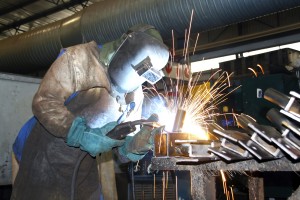
U.S. Underfunding Energy R&D
 Yesterday, the Washington Post reported on the state of energy research and development (R&D) in the United States, coming on the heels of the nomination hearing for Secretary of Energy. Ernie Moniz stated that U.S. energy R&D is underfunded by a factor of three. The Wonk Blog’s Brad Plumer looks at that figure.
Yesterday, the Washington Post reported on the state of energy research and development (R&D) in the United States, coming on the heels of the nomination hearing for Secretary of Energy. Ernie Moniz stated that U.S. energy R&D is underfunded by a factor of three. The Wonk Blog’s Brad Plumer looks at that figure.
In the article, three graphs tell a story of shrinking energy R&D and missed opportunities for research into clean energy technologies. ASP supports increased R&D in order to maintain our competitive edge in science and technology. Investments in new energy technologies are critical to driving innovation. In fact, there is a long history of public investments in R&D leading to significant innovations that change the way our societies function – examples including commercial aviation, GPS, nuclear power, and the internet. These innovations drive economic growth and enhance our national security.
The article notes that expenditures on energy R&D have doubled since a decade ago. Unfortunately, due to budget cuts, those levels are set to drop in the coming years. This drop off is particularly troubling due to the enormity of the problems we are facing: climate change, energy insecurity, finite fossil fuel resources, and the need to develop clean baseload power for coming generations.
One particularly exciting agency under the jurisdiction of the Department of Energy (DOE) is ARPA-E. ARPA-E, created in 2007, is the energy equivalent of the Defense Advanced Research Project Agency (DARPA). This young agency conducts research on cutting-edge technologies like advanced lithium ion batteries to drive down costs – investments which are not done in the private sector because they are too early on in the innovation process. ARPA-E sees a relatively small slice of the pie right now, but it is getting bigger.
That is good news because ARPA-E and other investments in basic and applied R&D ultimately benefit the private sector. As costs decline, technologies can be taken up for commercial purposes.
Other graphs in the story show that U.S. energy R&D is lower than what experts think we need to confront climate change and less than the International Energy Agency (IEA) recommends for developing clean-energy technologies.
These are good benchmarks for measuring how the United States stacks up relative to what the experts believe is necessary to make a difference on climate change. Moniz’s claim that the U.S. under-funds energy R&D by a factor of three, according to “expert consensus,” is on the lower end of the spectrum. Many experts believe the U.S. should be spending between $8 and $30 billion – much lower than the $4.3 billion spent in 2012.
The United States must shift its spending priorities to reflect strategies that are most likely to help American competitiveness, mitigate climate change, and secure our energy future. A good place to start is to dedicate robust and sustained funding for energy R&D in the annual appropriations process.






[…] U.S. Underfunding Energy R&D […]